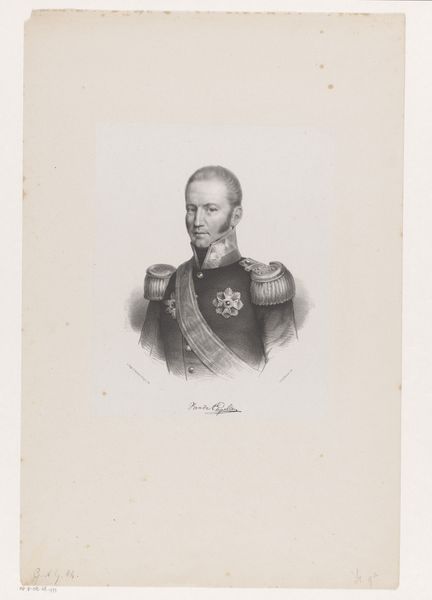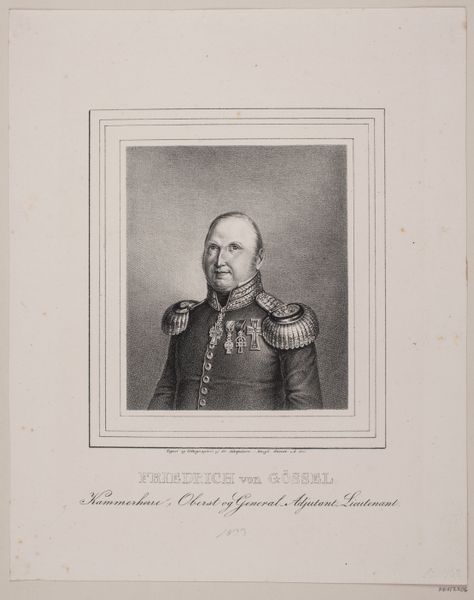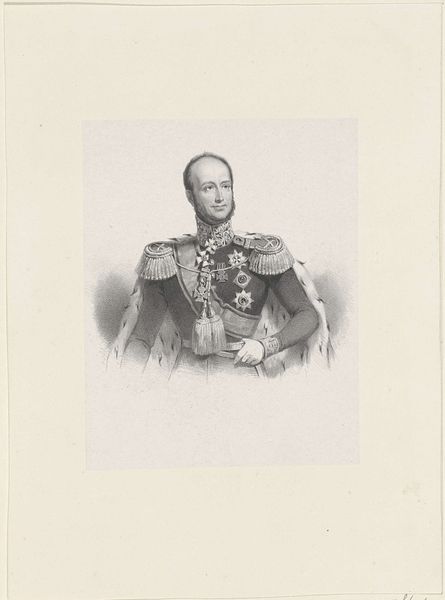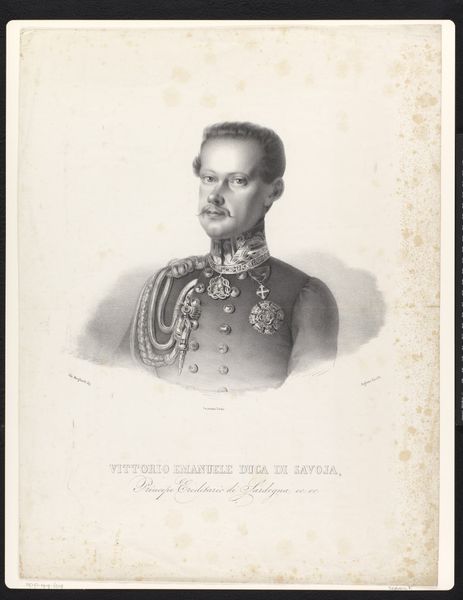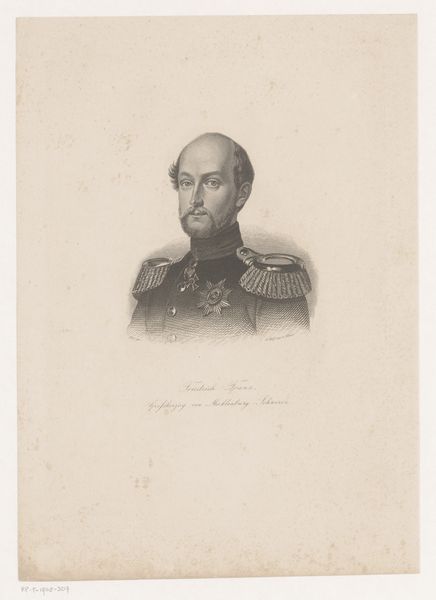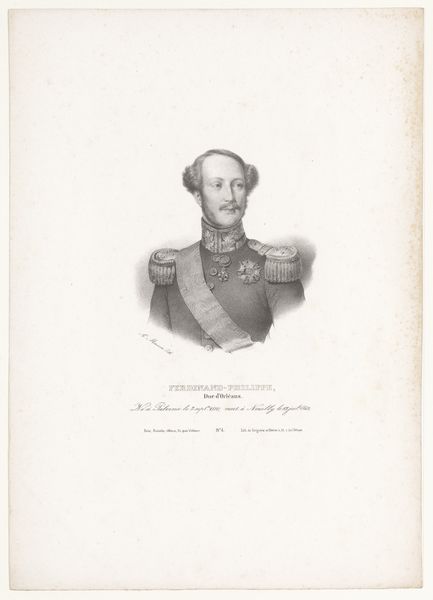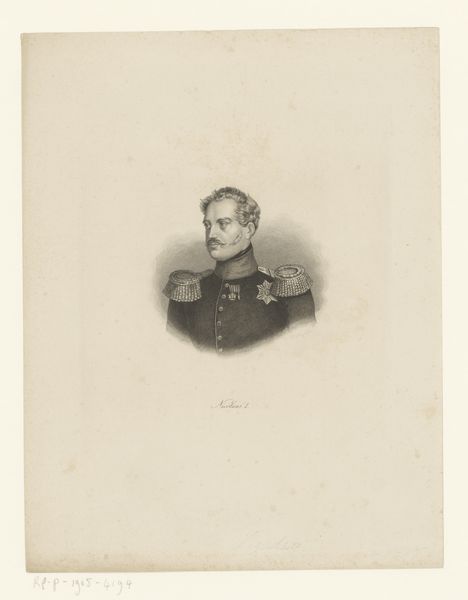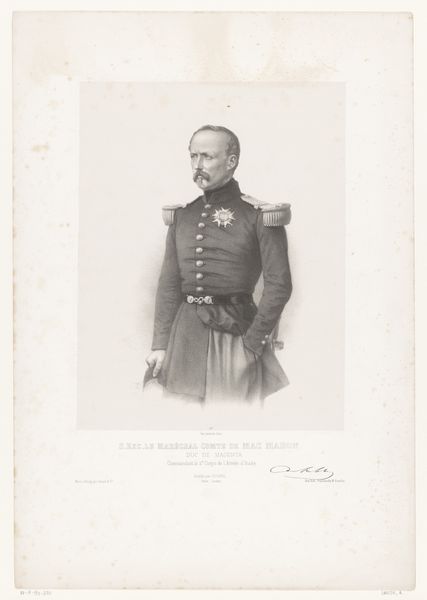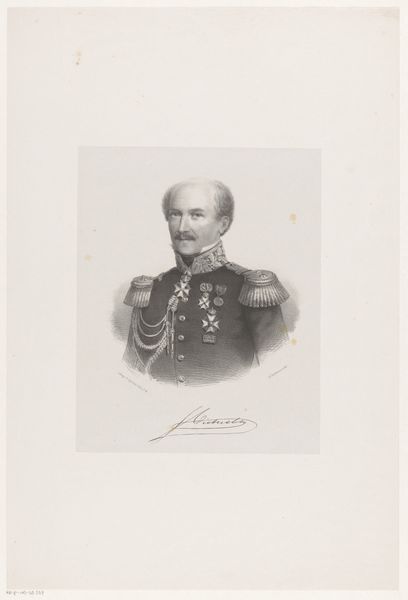
William I., emperor of Germany c. 19th century
Copyright: CC0 1.0
Editor: Here we have Pierre Guillaume Metzmacher's portrait of William I, emperor of Germany. It's a fairly stern depiction. What do you make of this image? Curator: This portrait, like many of its time, performs a very specific kind of power. The meticulous detail, especially in the rendering of his military garb and decorations, actively constructs an image of imperial authority. Consider the historical context: Germany’s unification under Prussian leadership. Editor: So the portrait is less about the individual and more about the empire? Curator: Precisely! It's about projecting strength and legitimacy. The artist uses visual cues to reinforce a specific narrative about nationhood and leadership. What does that suggest to you? Editor: I hadn’t considered how the portrait itself participates in creating a national image. Curator: It serves as a potent reminder that art is never neutral. It's actively involved in shaping our understanding of history and power dynamics.
Comments
No comments
Be the first to comment and join the conversation on the ultimate creative platform.

